Nickerson Beach Summer Bird Photography
There are several thousand pairs of beach nesting birds at Nickerson Beach every summer including Common Terns, Black Skimmers, American Oystercatchers, and Piping Plover. Nearly all of the terns and skimmers are in one of two colonies that are about 400 yards apart. There are lots of chicks and tons of flight photography. Not to mention predation. Viewing good images is a great way to improve your bird photography. There are a few good ones in this 21 minute video. Enjoy. Below are a few of my favorite Nickerson Beach photos and information on joining me there this summer.
|
|
Summer bird photography at Nickerson Beach is excellent. |
Nickerson Beach 2025 Educational Opportunities
Please note that prices for both the IPTs and the ITF sessions have been reduced in an effort to attract new blood.
Nickerson Beach 3 Day Mini IPT: WED AUG 6 afternoon thru the morning session on SAT AUG 9, 2025: $1899.00.
Three afternoon sessions, three morning sessions, two brunches with Image Review & Photoshop sessions. AirBnB lodging and rides with the leader possible. Please get in touch with questions or to register with an e-mail to samandmayasgrandpa@att.net and please copy birdsasartstaff@gmail.com) just to be sure. It looks as if I will have access to webmail on one of the two office computers.
|
|
Breeding Black Skimmers, Common Terns, and American Oystercatchers with young. |
Nickerson Beach 4-Day Instructional Photo-Tour (IPT): MON AUG 25 afternoon thru the morning session on FRI AUG 29, 2025: $2299.00.
Four afternoon sessions, four morning sessions, three brunches with Image Review & Photoshop sessions. AirBnB lodging and rides with the leader possible. Please get in touch with questions or to register with an e-mail to samandmayasgrandpa@att.net and please copy birdsasartstaff@gmail.com) just to be sure. It looks as if Will have access to webmail on one of the two office computers.
|
|
Breeding Black Skimmers, Common Terns, and American Oystercatchers with young. |
Morning BAA In-the-Field Instructional Sessions (ITFIS) followed by brunch and an Image Review & Photoshop session: $449.00/per session
Available dates: AUG 10-31, SEPT 1-5, 2025. Please get in touch with questions or to register with an e-mail to samandmayasgrandpa@att.net and please copy birdsasartstaff@gmail.com) just to be sure. It looks as if I will have access to webmail on one of the two office computers.
Afternoon BAA In-the-Field Instructional Sessions (ITFIS): $299.00/session.
Available dates: AUG 10-15 & 17-31, SEPT 3-5, 2025. Please get in touch with questions or to register with an e-mail to samandmayasgrandpa@att.net and please copy birdsasartstaff@gmail.com) just to be sure. It looks as if I will have access to webmail on one of the two office computers.
Morning and afternoon sessions may be combined and multiple days of instruction are feasible.
|
|
Morning In the Field Instruction at the East Pond at Jamaica Bay Wildlife Refuge may be available — 7/21-22/25. |
Some of What You Will Learn on a Nickerson Beach IPT
- 1- The basics and fine points of digital exposure; how to get the right exposure every time after making a single test exposure (or before if you are using SONY gear).
- 2- How and why to work in Manual mode (even if you’re scared of it).
- 3- How to approach free and wild birds without disturbing them.
- 4- Lots about bird behavior and how to use that knowledge to help you create better images.
- 6- To spot the good and great situations and to choose the best perspective.
- 7- To see, evaluate, and understand the light.
- 8- To design pleasing images by mastering your camera’s AF system.
- 9- And perhaps most importantly, to evaluate wind and sky conditions and understand how they combine to affect bird photography. You will learn where and when to be (and why).
- 10- More than you could ever imagine.
What’s Up?
Keep reading to learn about joining me at Nickerson Beach this summer. There are lots of educational opportunities, and tons of great photography. And please understand that there is no-one on the planet better than me when it comes to helping you learn to create better images. Just the facts, ma’am.
As the summer doldrums continue, I’ve been spending my early mornings down at the lake with the cranes and a very few Black-bellied Whistling Ducks. There has not been a lot around.
Today is Saturday 19 July but — please do not be confused, I will not be sending the post notifications via Newsletter until Sunday morning. I will be heading down to the lake early as when I arrived late at 7:20am on Thursday the Great Blue Heron was standing by the shore with a huge bulging throat; it had just eaten something really large 🙁
I am FED-EX-ing my MacBook Pro to Apple on Monday morning for a cleaning and some minor but much-needed maintenance. I am hoping against hope to have it back no later than Friday. They are generally pretty quick. If you need to get in touch this coming week, please send an e-mail to samandmayasgrandpa@att.net and please copy birdsasartstaff@gmail.com) just to be sure. It looks as if I will have access to webmail on one of the two office computers.
Without my laptop, I will start packing for my trip up to Long Island this week. I will be on the Auto Train on Monday 4 August. I head south on Monday 8 September, an even five weeks. Whatever you opt to do, I hope that you too choose to have a wonderful and productive day and that you have fun too. Do remember that happiness is a choice — Byron Katie, The Work.Com.
If an item — a Delkin flash card, a Levered-clamp FlexShooter Pro, or a Wimberley lens plate — for example, that is available from B&H and/or Bedfords, is also available in the BAA Online Store, it would be great, and greatly appreciated, if you would opt to purchase from us. We will match any price. Please remember also to use my B&H affiliate links or to earn 3% cash back at Bedfords by using the BIRDSASART discount code at checkout for your major gear purchases. Doing either often earns you free guides and/or discounts. And always earns my great appreciation.
Gear Questions and Advice
Too many folks attending BAA IPTs and dozens of photographers whom I see in the field and on BPN, are — out of ignorance — using the wrong gear, especially when it comes to tripods and more especially, tripod heads. And the same is true in spades when ordering new camera bodies or lenses. My advice will often save you some serious money and may help you avoid making a seriously bad choice. Please know that I am always glad to answer your gear questions via e-mail. If you are desperate, you can try me on my cell at 863-221-2372. Please leave a message and shoot me a text if I do not pick up.
Don’t Just Shoot: Learn
If you are interested in changing your life and becoming a better photographer by joining me on an Extended IPT at Sebastian Inlet for Ospreys and more (SEPT 25 to NOV 24, 2025) in San Diego for Pacific-race Brown Pelicans and more (JAN 6 to FEB 2, 2026), for Roseate Spoonbills at Stick Marsh mid-March 2026, please e-mail for dates, rates, terms, and additional information. Or shoot me a text to 863-221-2372. Some offerings include options for shared AirBnB lodging and meals. Ground transportation during your stay is a possibility at times.
B&H Simplified
To ensure that I get credit for your B&H purchases, you can always click here. The tracking is invisible but using my affiliate links is greatly appreciated. And, with B&H, you can use your PayBoo card. You must use the website to order. You cannot get your free guides if you make a phone order. Once you have an item in your cart, you must complete the order within two hours. Huge thanks!
B&H
Many folks have written recently stating that they purchased a Sony a1 from B&H and would like their free membership in the Sony 1 Info and Updates Group, a $150.00 value. But when I check my affiliate account, their orders have not been there. When I let them know that they get credit for B&H purchases only if they use one of the many B&H affiliate links on the blog or begin their searches with this link, they are always disappointed. If in doubt, please contact me via e-mail and request a BH link. I am always glad to help and to guide you to the right gear.
Bedfords Simplified
Click here to start your search. Choose standard shipping, and when you get to the payment page, enter BIRDSASART in the discount code box and hit apply. You will be upgraded to free second day air Fed-Ex and receive 3% cash back on your credit card once your stuff ships. Using either my affiliate links is greatly appreciated and will often earn you free guides or discounts.
Bedfords Amazing BAA Discount Policy
Folks who have fallen in love with Bedfords can always use the BIRDSASART coupon code at checkout to enjoy a post-purchase, 3% off-statement credit (excluding taxes and shipping charges) on orders paid with a credit card. The 3% credit will be refunded to the card you used for your purchase when your product ships. Be sure, also, to check the box for free shipping to enjoy free Second Day Air Fed-Ex. This offer does not apply to purchases of Classes, Gift Cards, or prior purchases.
You can visit the Bedfords website here, shoot Steve Elkins an e-mail, or text him on his cell phone at (479) 381-2592.
|
|
|
This image was also created on 20 August 2022 at Nickerson Beach Park, Lido Beach, Long Island, NY. While still seated on damp sand I used the lowered, no-longer available except from BIRDS AS ART, Induro GIT 304L tripod/Levered-Clamp FlexShooter Pro-mounted Sony FE 600mm f/4 GM OSS lens with the Sony FE 1.4x Teleconverter (at 840mm) with The One, the Sony a1 Mirrorless Camera. The exposure was determined via Zebras with ISO on the Thumb Wheel. ISO 2000: 1/1000 sec. at f/5.6. AWB at 7:45:44am on a cloudy morning. Tracking: Zone/AF-C with Bird Face/Eye detection enabled was active at the moment of exposure and performed perfectly. Be sure to click on the image to enjoy the larger version. Image #1: Piping Plover — worn juvenile plumage eating tiny worm |
Foot Trembling
This young Piping Plover would stand in one spot on one leg with the other leg extended. It would rapidly tap the surface of the sand with toes of the extended foot. I made a video of this behavior. I knew that it had something to do with improving the bird’s foraging success. I shared the video with Marc Wortsman when I ran into him at Bagel Chalet in Merrick on Saturday morning. He did some work online and sent me a link to a great paper on foot trembling in a related species, Ringed Plover. I read it (here) with great interest, and learned that there are actually two theories as to the purpose of the behavior.
|
|
|
This image was created on 30 August 2022 at Nickerson Beach. Standing on the beach, I used the hand held Sony FE 200-600mm f/5.6-6.3 G OSS lens (at 600mm) and The One, the Sony Alpha 1 Mirrorless digital camera. The exposure was determined using Zebra technology with Exposure Compensation on the Thumb Dial. Shutter Priority +2.3 stops. AUTO ISO set ISO 125. 1/13 second at f/6.3 (wide-open). AWB at 6:50:35am on a very cloudy morning. RawDigger showed the exposure to be perfect. Tracking: Spot S/AF-C with Bird Face/Eye Detection performed perfectly. Be sure to click on the image to enjoy a high-res version. Image #2: Black Skimmer early morning blastoff
|
What’s Good About This Image?
Zoom lenses are great for doing blurs. When you need to, you can zoom out to ensure a clean upper edge and a clean lower edge, as seen above. Other plusses include an almost surreal degree of blurring on the birds taking off, the inclusion of some skimmers that are still on the ground, and a perfectly level (and somewhat interesting horizon). Note that by standing I was able to include a large expanse of light blue water in the background — Jones Inlet. Had I been sitting that would have been greatly reduced.
|
|
|
This image was created on 23 August 2022 at Nickerson Beach, Lido Beach, Long Island, NY. Standing at full height, I used the handheld Sony FE 200-600mm f/5.6-6.3 G OSS lens (at 600mm) and The One, the Sony Alpha 1 Mirrorless digital camera. ) The exposure was determined using Zebra technology with ISO on the Thumb Dial. ISO 800. 1/4000 second at f/6.3 (wide-open) in Manual Mode. AWB at 6:48:04pm, late on a sunny afternoon. RawDigger showed the exposure to be dead-solid perfect. Tracking: Zone/AF-C with Bird/Face-Eye Detection performed perfectly. Be sure to click on the image to enjoy a high-res version. Image #3: Black Skimmers/midair chase
|
Skimmer Midair Battles
Adult Black Skimmer aerial chases and fights are most common at both breeding colonies on Nickerson Beach June through August most years. Though hot, sunny afternoons often offer the most action, such squabbles may occur any time of day. There are more aerial chases when the birds are setting up territories and then again when the eggs hatch and there are chicks about. There are fewer battles when the birds are on eggs. I am pretty sure that most such interactions are territorial disputes.
To photograph such battles, you can stand well back from the colony ropes. They usually begin when two birds fly up a short distance –five to ten feet. When you notice that, try to get your lens on the birds as they will often fly up much higher and interact, sometimes spectacularly with the birds pecking at or grabbing the other bird’s feet, tail, wing, head, bill, or neck with their bills. Some battles seem to last forever (at least in terms of action photograph), perhaps 20-30 seconds. Others last only a few seconds. Don’t quit when the birds break apart as they may circle around in flight and then resume their antagonistic behavior.
At times, you might be able to photograph one bird and at times you will go for both birds. If the latter, the odds are 4-1 against your getting two good head angles, and much slimmer than that to capture a stunning image with the two birds nicely portioned in the frame, the faces of both birds visible, and both subjects pleasing oriented to the imaging sensor. In other words, getting a truly outstanding image of two birds battling in midair is like winning the lottery. On some occasions, one bird might have a sharp interesting flight pose while the second bird is clipped or facing the wrong way. Creating really good images of a single bird involved in aerial chase is much, much easier than photographing two birds engaged in battle. But the latter are far more rewarding. In some cases, creating a composite with battling birds from two different frames of a sequence may be the best option. If that fits with your personal ethics.
|
|
|
This image was created on 30 July 2024 on the Nickerson Beach (extended) IPT. Seated on wet sand (at best) I used the flattened Robus RC-5570 Vantage Series 3 Carbon Fiber Tripod/Levered-Clamp FlexShooter Pro-mounted Sony FE 600mm f/4 GM OSS lens with the Sony FE 1.4x Teleconverter, and The One, the Sony Alpha 1 Mirrorless Digital Camera.. ISO 1600. The exposure was determined by Zebras with ISO on the rear wheel: 1/1000 second at f/5.6 (wide open) in Manual mode. RawDigger showed that the exposure was perfect. AWB at 6:41:40am on sunny morning with just too much moisture in the air. Tracking: Zone/AF-C with Bird-Eye/Face Detection performed amazingly well. Click on the image to enjoy the high-res version. Image #4: American Oystercatcher — the un-banded family of four |
A 10,000 to 1 Against Head Angle /Juxtapositional Miracle
Though the image looked completely washed out, the image design thrilled me. Getting two perfect head angles is difficult enough — four is too much to even dream of. And you could not paint the juxtaposition of the four birds any better. And since I knew that I could improve the color and contrast, this was a 100 percent keeper for me.
I thought that I would need to use more Dehaze than usual to bring this one to life, but simply setting the White Point and the Black Point as I always do as the first step in the raw conversion was all that was needed to improve the color and contrast. I cropped from below and from the right, added canvas in front of the birds, and worked hard to clean up the wet, ratty looking head of the closest bird, one of the two juveniles.
If you would be lost trying to optimize foggy looking images, check out the two offerings immediately below.
The un-banded family of four has given us many, many hours of enjoyment as they are absolutely tame and feed along the surf line in the same spot every morning. On Thursday, I was sitting in the water to photograph them and when I big wave came along, I needed to lift my rig with one hand to avoid having it get inundated by saltwater.
|
|
|
This image was created on 2 August 2024 on the last morning of the first Nickerson Beach (extended) IPT. Seated on dry sand behind my flattened Robus RC-5570 Vantage Series 3 Carbon Fiber Tripod/Levered-Clamp FlexShooter Pro-mounted Sony FE 600mm f/4 GM OSS lens with The One, the Sony Alpha 1 Mirrorless Digital Camera). The exposure was determined via Zebra technology with Exposure Compensation on the thumb dial. Multi metering + 1 stop — AUTO ISO set ISO 2500. 1/3200 sec. at f/4 (wide open) in Manual mode. When evaluated in RawDigger, the raw file brightness was determined to be perfect. AWB at 6:11:40am on a then barely sunny morning. Image #5: Backlit Black Skimmer with killifish — juiced up pano crop |
Bold, Bright, and Graphic
This image was created from a much blander raw file. It is a somewhat radical, seriously jazzed up version and was my first effort with this photo. Getting the clean, bright, tight, high contrast, colorful, graphic look was the result of following my basics workflow and juicing up the color several different ways.
The way we choose the look of our images is determined by the artist within each of us.
|
|
|
This image was created on 4 August 2024 at Nickerson Beach Park, Lido Beach, Long Island, NY on the 2nd Nickerson Beach (extended) IPT. Seated on dry sand, I used the hand held Sony FE 300mm f/2.8 GM OSS lens (Sony E) with the Sony FE 1.4x Teleconverter and the ridiculously amazing Sony a9 III Mirrorless Camera. The exposure was determined using Zebra technology with ISO on the Thumb Dial. ISO 1600. 1/3200 second at f/4 (wide open) in Manual Mode. AWB at 7:54:01am on a cloudy morning. RawDigger showed the raw file brightness to be perfect. Zone AF-C with Bird Face/Eye Detection performed perfectly. Be sure to click on the image to enjoy a high-res version. Image #6: Black Skimmer — large chick, short practice flight |
Orvilles
For fairly obvious reasons, avian researchers studying tern and skimmer chicks that are struggling to learn to fly call such young birds “Orvilles.” That in honor of the efforts of American aviation pioneers Orville and Wilbur Wright. The Wright brothers crashed many early versions of the Wright Flyer in the sandy hills south of Kitty Hawk, North Carolina. When the young birds are first learning to fly, their landings are often comical wrecks.
Pat Fishburne and I were seated on the sand in range of several young skimmers. The bird in the photo ran toward us twice flapping its wings. When it walked back to the rusty fence post again, we got ready. The third time was the charm and the a9 iii nailed the eye!
|
|
|
This image was created by Arthur Morris at Nickerson Beach while leading the first (extended) Combo IPT. Seated on damp sand he used the heel pod technique with the I used the hand held Sony FE 300mm f/2.8 GM OSS lens (Sony E) with the Sony FE 2x Teleconverter and The One, the Sony a1 Mirrorless Camera. The exposure was determined using Zebra technology with ISO on the Thumb Dial. ISO 1250. 1/1250 second at f/6.3 (stopped down 1/3-stop in error) in Manual Mode. AWB at 6:54:34pm late on a sunny afternoon. RawDigger showed the raw file brightness to be perfect. Tracking: Expand Spot AF-C AF with Bird Face/Eye Detection performed perfectly. Be sure to click on the image to enjoy a high-res version. Image #7: American Oystercatcher male atop a mound of sand in gorgeous light |
Art for artie
Some folks call images like this beauty shots. I call them BIRDS AS ART — clean, tight, graphic, and colorful with a lovely, de-focused background. And the somewhat patriotic color scheme works for me as well. When I saw this bird pause atop a clean mound of sand, I hustled to my right to get on sun angle, flipped out the rear screen, put on my reading glasses, and prayed for the bird to stay for a few moments as I sat down slowly so as not to scare him off. I supported the lens with between my heels quickly found the bird in the viewfinder, and fired about two dozen frames, the first 12 at the exposure above, and then another 12 1/3 stop lighter. Only two of the slightly darker frames had the perfect head angle.
The key to the success of this image was that with the bird elevated on a rise, the Atlantic Ocean blue background was a relative mile away from the bird. The resulting image was exactly what I had envisioned when I saw the bird on the smooth mound of sand.
Typos
With all blog posts, feel free to e-mail or to leave a comment regarding any typos or errors.

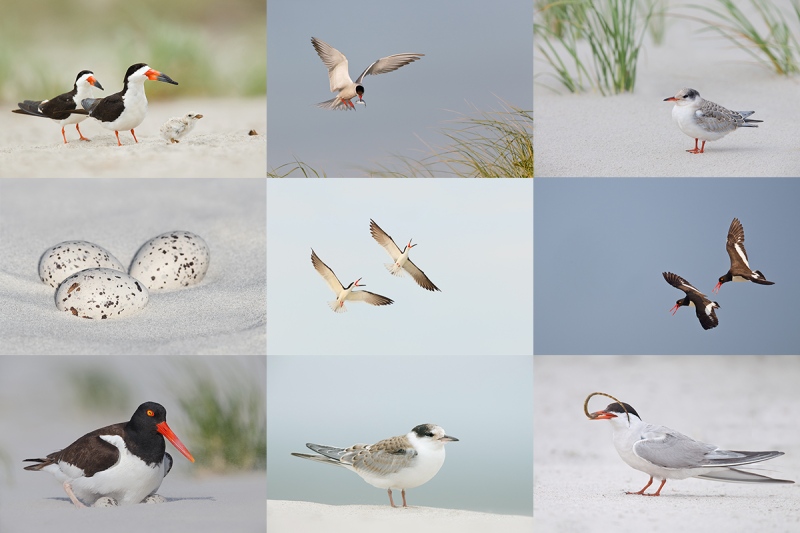
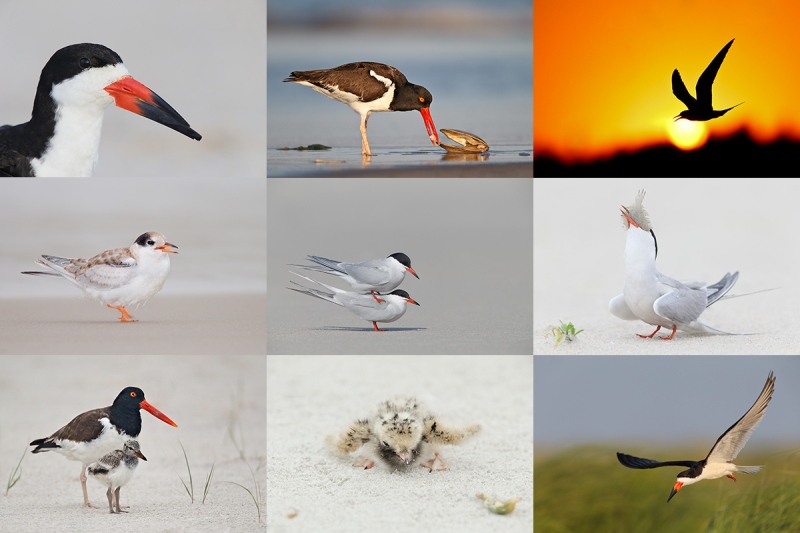
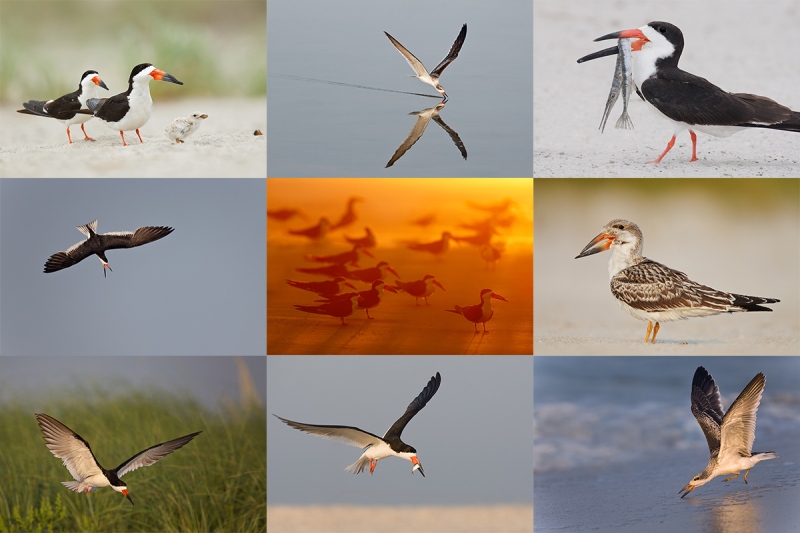
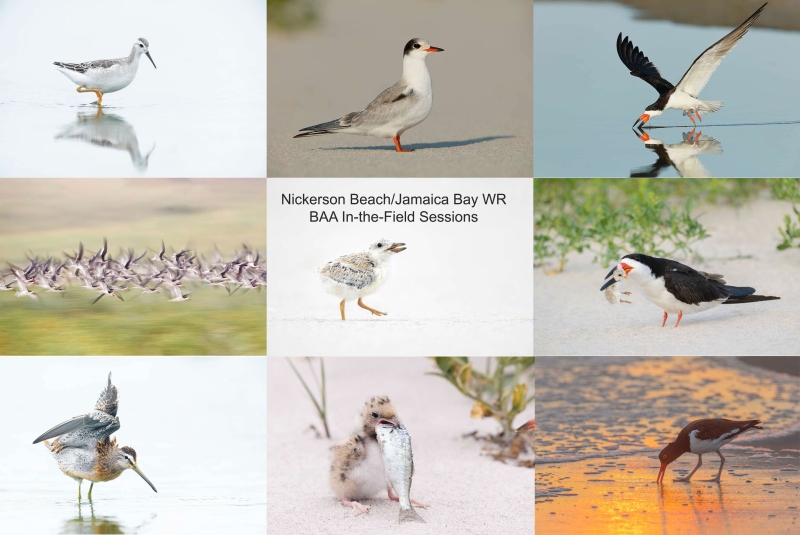


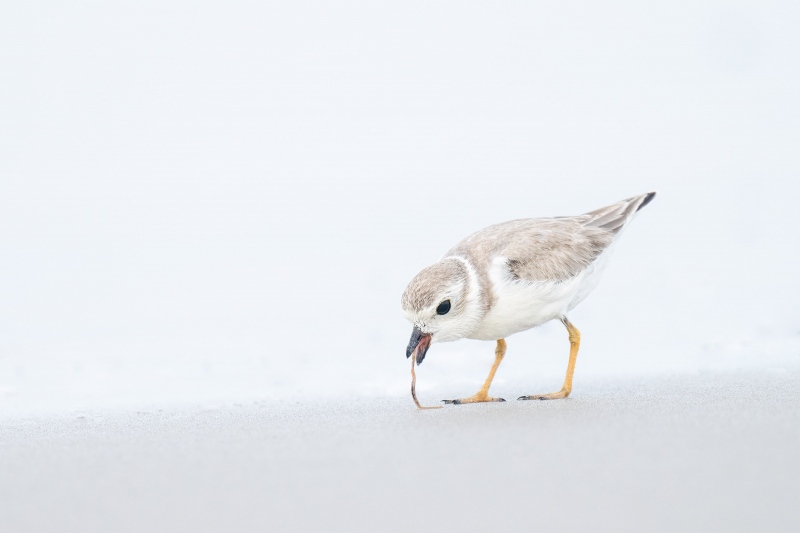
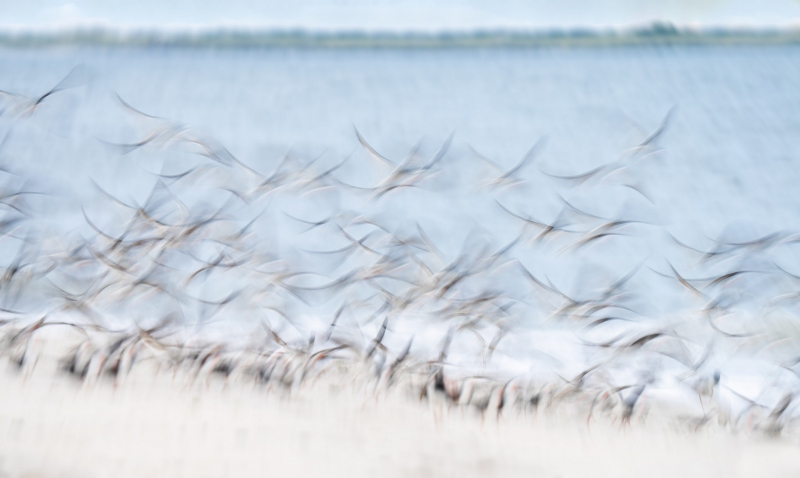
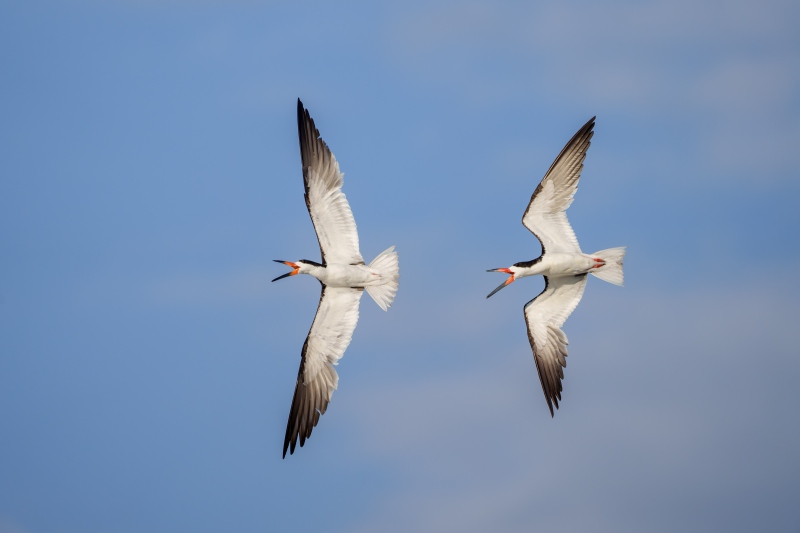
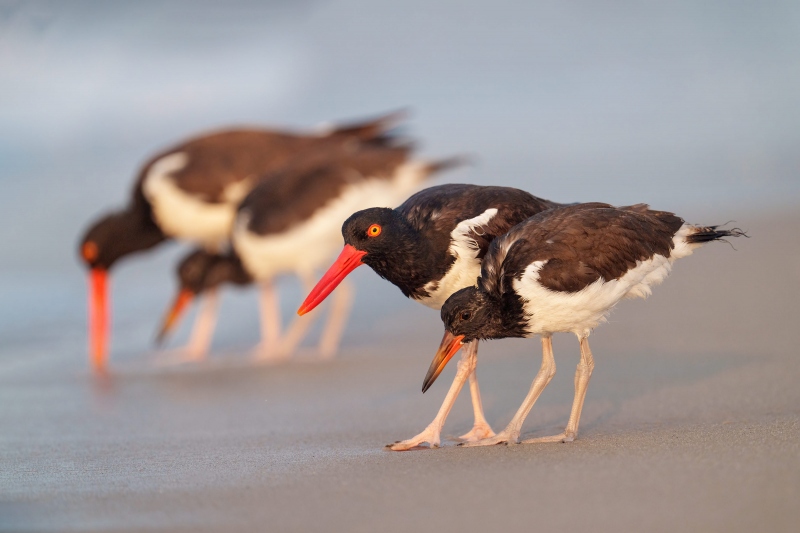
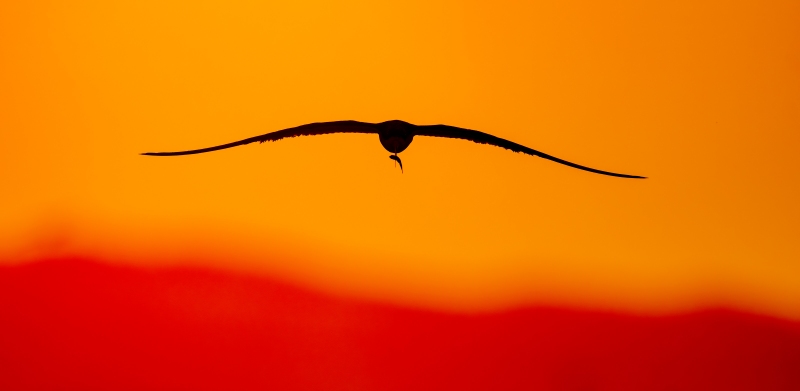

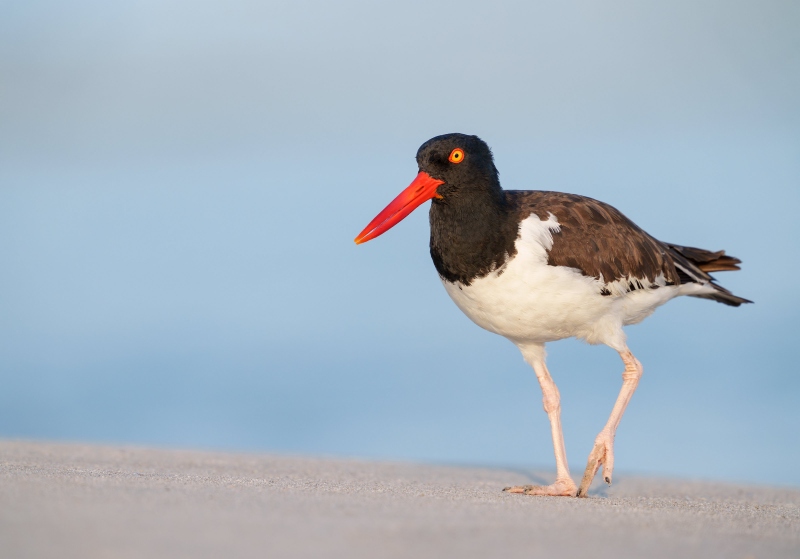






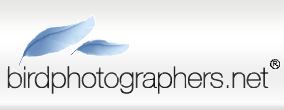


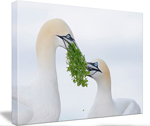



Love that black skimmer chick practicing flight.
Thank you sir. We had more than a few keepers of that bird.
with love, artie
Dear Art: I was thrilled to see a couple of my images in today’s blog!
Glad for that!
with love, a